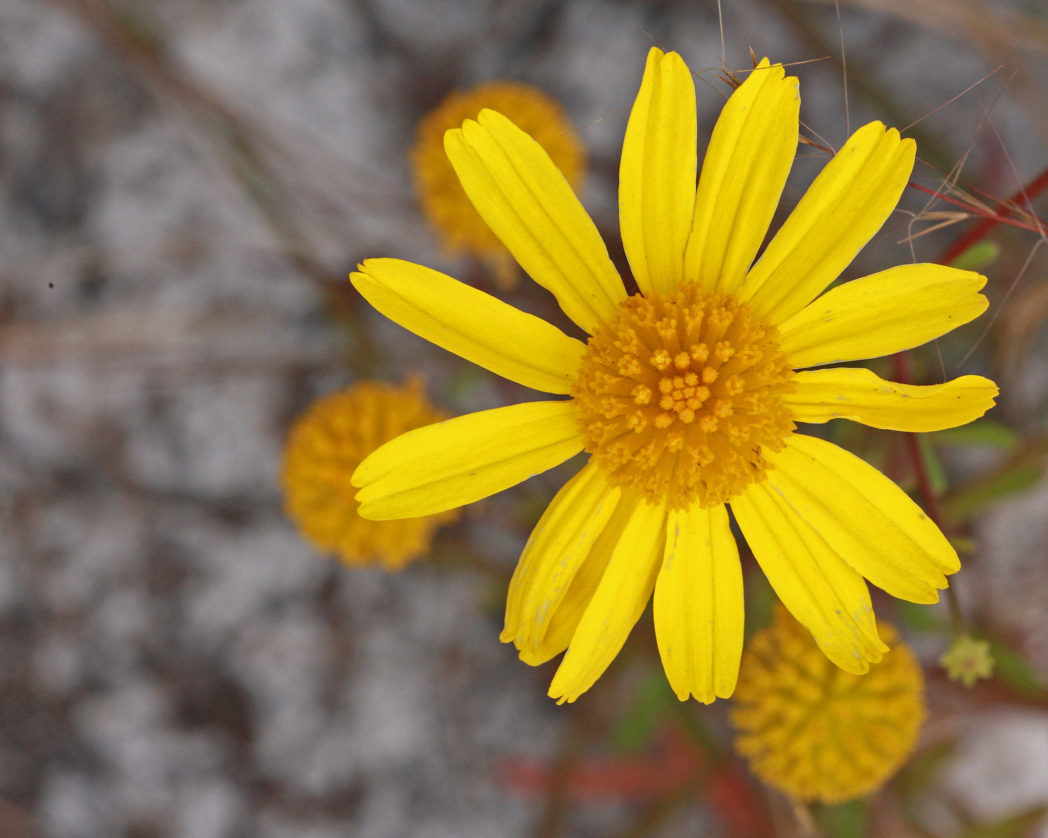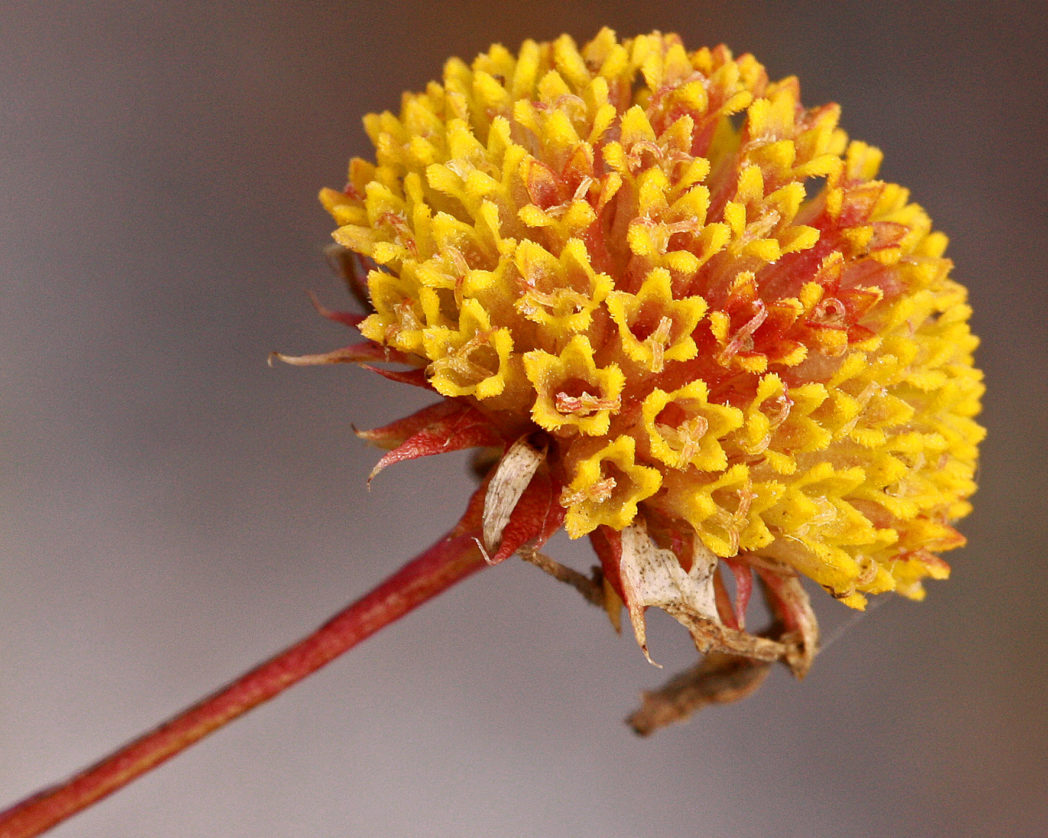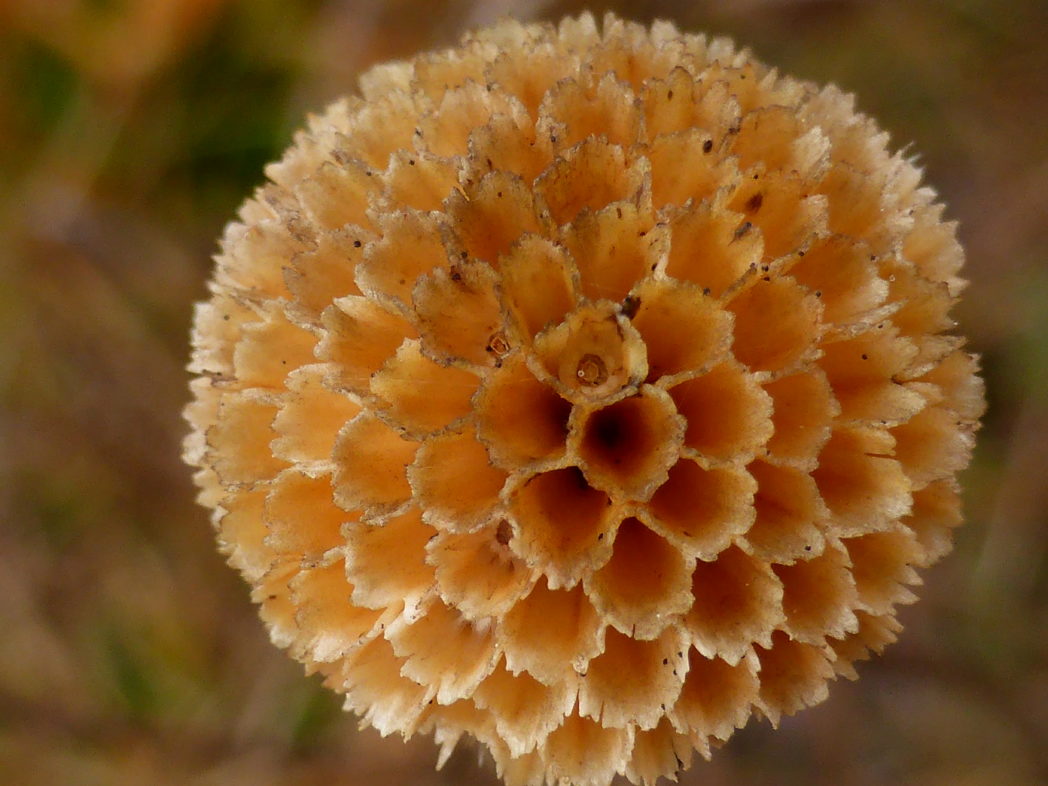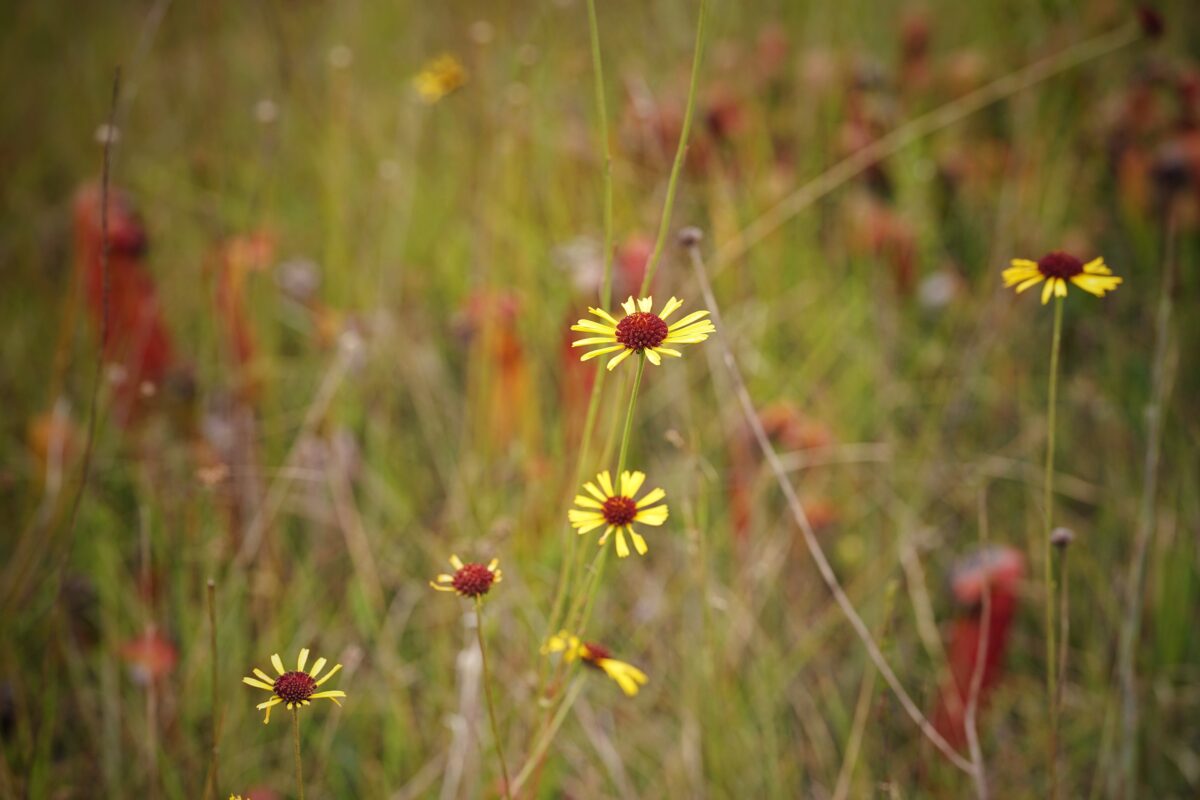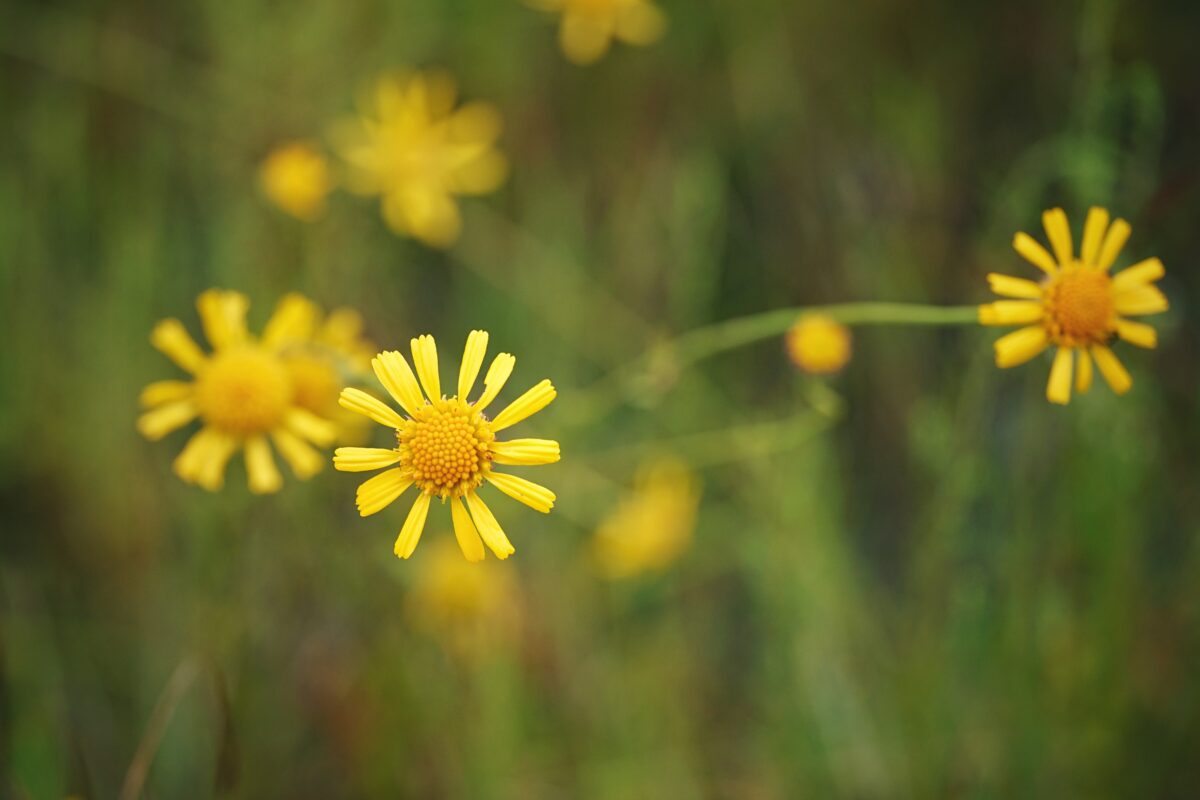Coastalplain honeycombhead
Pictured above: Coastalplain honeycombhead (Balduina angustifolia) by Mary Keim. Click on terms for botanical definitions. View post as a PDF.
Coastalplain honeycombhead (Balduina angustifolia) is an annual to biennial wildflower that produces showy, golden blooms. Each flower consists of many yellow ray and disk florets, and each plant produces 20 or more flowerheads. As the plant matures, the ray florets fall off, but the disk florets remain yellow. Eventually, the disk florets dry up and form what resembles a honeycomb (hence the common name). Leaves are narrow with entire margins. They are alternately arranged. The plant spends its first year as a set of basal leaves; it will send up a stem in its second spring.
Coastalplain honeycombhead typically blooms late spring or summer into fall. It occurs naturally in sandhills, scrub, dunes, and pine and scrubby flatwoods. It attracts a variety of butterflies, bees and other pollinators.
Coastalplain honeycombhead is also known as yellow buttons.
Family: Asteraceae (Aster, composite or daisy family)
Native range: Nearly throughout Florida
To see where natural populations of Coastalplain honeycombhead have been vouchered, visit florida.plantatlas.usf.edu.
Lifespan: Annual to biennial
Soil: Dry, sandy soils
Exposure: Full sun to minimal shade
Growth habit: 3’ tall
Propagation: Seed
Florida regions of landscape suitability: North, Central, South
Garden tips: Coastalplain honeycombhead may reproduce by self-seeding, but it requires open, sandy areas to do so.
Although not widely cultivated, plants may occasionally be available from nurseries that specialize in native plants. Visit PlantRealFlorida.org to find a native nursery in your area.
Learn more about Coastalplain honeycombhead from the Florida Native Plant Society and the Institute for Regional Conservation.
For information on other Balduina species, see:

